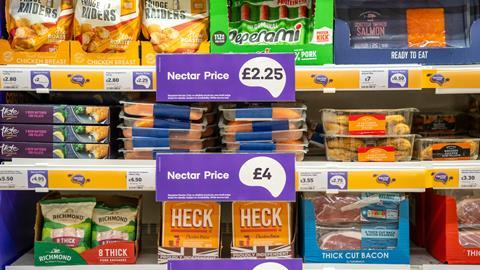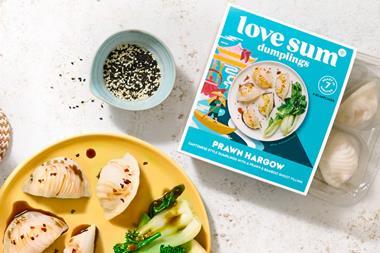When Sainsbury’s announced its ‘Food First’ strategy in 2020, it was hard to get excited. The thought occurred that if a supermarket wasn’t putting food first already, what on earth had it prioritised for all that time?
There was a similar reaction today when Sainsbury’s announced plans to stock its full range in more stores. At the ‘Next Level Strategy’ update, CEO Simon Roberts promised “more for more: more food range available for more customers”. The fact is, he admitted, “only 15% of our supermarkets offer our full food range”. The plan was to roll out the full range – some 30,000-odd products – to another 180 of its 600 or so supermarkets. That’s on top of the opening of an additional 75 new Local convenience stores.
So, let’s get this straight. Four years into its Food First strategy, Sainsbury’s isn’t currently selling its full food range in the vast majority of its numerous superstores and hypermarkets. Whaaaaaat?
That’s been the M&S strategy for the past five or so years, understandably so. The M&S estate was dominated by tiny convenience stores, while being overcommitted to underperforming fashion on the space allocation side. It needed to showcase its already limited food range more.
But for Sainsbury’s there’s been no such space limitations. That raises two questions: what on earth has it been selling all this time? The answer to that is reasonably straightforward: even with a Food First strategy it’s evidently still been over-allocating space to GM: to Tu, Habitat and Argos. The bigger question is why?
And the answer, as Roberts explained, is about investment. The aim is to reallocate an extra 10% space in these 180 stores, with a focus on fresh food, and to showcase a lot more of its innovation, with the extra space also improving availability and efficiency as replenishment would not be required quite so frequently.
But to do that requires investment: moving fridges and lighting around – even by a few feet here and there – isn’t cheap at scale. And for the past four years Sainsbury’s has been focusing its investment in price, underwritten by a £1.3bn cost reduction programme, and innovation.
Sainsbury’s business strategy investments
With that investment now paying dividends – the only full-shop supermarket growing volumes and gaining market share in the latest NIQ results – and with net debt reduced from £1.2bn in 2019/20 to “almost zero” (not including lease liabilities), now was the time, said Roberts, to invest, with a ballsy £2.6n capex commitment over three years marking a new chapter for Sainsbury’s.
Crucially the investment is being made from a position of strength, but also “at a point in time when others can’t,” said Roberts, pointedly, in market conditions that “will create winners and losers”.
Of course these investment plans aren’t limited to store upgrades. The recent announcement of a £70m investment in fast-charge EV technology contrasts markedly with last week’s sale by Morrisons of its forecourt business. Or in a different way the extra debt that Asda has been lumbered with.
Other investments will also be made in areas like AI forecasting and automation within its supply chain to achieve higher productivity – investments that will help Sainsbury’s to deliver a further £1bn in cost savings in the three-year Next Level plan, while enabling it to grow volumes still higher.
Inevitably that will also mean job losses along the way. “We can’t afford to be carrying any inefficiency,” said Roberts. How many, he wouldn’t say. But he stressed that costs would only be cut “in areas that customers didn’t value”. And there’s a commitment too that ‘Next Level’ also means improving ‘colleague engagement’ still higher.
“We’re going to find different ways of achieving efficiencies,” said Roberts, adding that finding more end-to-end solutions across the business remains “super important”.
How many products does Sainsbury’s stock?
“We have about 30,000 food products in our range, and we procure them from hundreds of suppliers,” he added. “They all come in different pack sizes, different combinations and we have to distil all that out and then put them on the shelf in a really efficient way.
“When we look at all the processes, from buying to moving to selling… there’s huge amount of value in how we do that. That would be an example of something we haven’t tapped into just yet,” Roberts said.
As an example, Roberts said Sainsbury’s had begun to close its deli counters in stores since 2020, and customers were now buying those products on shelves.
“We can automate decisions to get a better outcome for customers and importantly free up people to do what they do best, and that’s serve customers and be available for them.
“Our people do a brilliant job at adapting and being more flexible to work in different parts if the shop. That’s a really important way that we make sure we protect jobs as much as possible, we drive flexibility as much as we can and we reskill where we need to.
“We hired 60,000 people last year… so our focus is on driving change where we need to, redeploying wherever we can.
“But actually the big point here is we are growing our volume, and as you sell more food, a really important underpinning is making sure we have the people we need to be able to do that,” he said.

























No comments yet